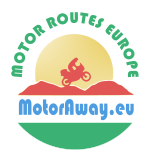Riding Your Motorcycle in Europe: Essential Tips for (Non-)European Riders
Riding Your Motorcycle in Europe: Essential Tips for (Non-)European Riders
Planning a motorcycle trip through Europe is an exciting adventure, offering diverse cultures, stunning landscapes, and historic cities—all interconnected by an extensive road network. However, if you’re a rider from outside Europe, it’s crucial to understand the basics of European riding rules and customs before you set off. Here’s a handy guide with some key tips and essentials for making your ride across Europe smooth and enjoyable. If you want the technical details see the website of the FEMA (The Federation of European Motorcyclists Association)
- Driver’s License and Insurance
To legally ride a motorcycle in Europe, you’ll need a valid motorcycle license. If you’re from a country outside the EU, check if an International Driving Permit (IDP) is required. Some countries may demand it, even if your license is in English. European Union countries have mutual agreements for insurance coverage, which includes the European Green Card system. This card acts as proof of insurance in many European countries. Make sure your insurance covers all the countries on your route. Some areas, like Bosnia and Herzegovina or Montenegro, may not accept international policies, so confirm with your insurer beforehand.
- Know the Speed Limits
Speed limits vary widely across Europe:- Motorways/Highways: 120-130 km/h is common, but some countries have lower limits.
- Urban Areas: 50 km/h is typical, although some residential areas may have 30 km/h limits.
- Rural Roads: Usually 80-90 km/h.
Check the speed limits for each country you plan to visit and stay updated, as traffic laws are strictly enforced with heavy fines. When driving into the next country, at the border the new speeds are displayed beside the road.
And remember, in some places like Germany’s Autobahn, there are sections with no speed limit—but always drive within your skill level and motorcycle’s capability.
- Helmet and Safety Gear
A helmet is legally required in every European country, and in many places, specific safety gear is also mandatory. Reflective vests are required in some countries, especially when visibility is low. For example, in France, every motorcyclist must carry a reflective vest, and in Italy, it’s essential to wear one if you stop on the shoulder.
In Belgium, there’s an additional requirement for motorcycle riders and passengers: riders must wear gloves, a jacket with long sleeves, long pants, and sturdy boots that cover the ankles.
These regulations are strictly enforced, so make sure you’re geared up accordingly before you cross the Belgian border.
Besides these requirements, wearing protective gear such as riding boots, gloves, and armored jackets is always recommended to enhance your safety on the road.
- Traffic Rules and Road Signs
Most European countries drive on the right side of the road (except the UK, Ireland, and some islands). Be especially mindful at roundabouts, where vehicles inside generally have the right of way. Understanding European road signs is essential, as they are standardized across the continent but may look different from what you’re used to.- Priority Roads: Roads with priority signs give specific rights to vehicles, even if another road intersects.
- Speed Cameras: Many countries have automated cameras for speed control. In France, for example, there are frequent speed checks on highways, and fines can follow you home through international agreements.
- Tolls and Environmental Zones
Many European highways have tolls, especially in countries like France, Italy, and Spain. Payment systems vary, so check if you’ll need cash or a toll pass. Additionally, several European cities and regions, like Paris and Milan, have Low Emission Zones (LEZ) that may restrict older or high-emission vehicles. Check for stickers or passes if you plan to enter these zones, as violating these restrictions can lead to fines.
- Parking Tips
Parking regulations also vary widely. In Italy, for instance, motorcycles can park in designated spots on the sidewalk, but in Spain, parking on sidewalks is prohibited. Read about the local parking rules in the countries you like to visit. Some cities offer free motorcycle parking, while others require a fee. Be prepared with small money or a parking app for easy payment.
- Emergency Numbers and Roadside Assistance
In case of an emergency, 112 is the universal emergency number throughout Europe. It connects you to police, fire, and medical services. For roadside assistance, consider joining a European breakdown service or checking if your insurance includes this benefit.
- Cultural Differences
Europe is a melting pot of cultures, each with its own pace and driving style. For instance, in The Netherlands or Italy lane-splitting is common while in Germany it’s prohibited. Patience and adaptability are your best friends, as driving customs can vary even within the same country.
- Prepare for Diverse Weather Conditions
European climates can vary drastically from north to south and season to season. In Scandinavia, temperatures can vary a lot from hot to chilly in summer, while Southern Europe can be extremely hot. Pack versatile gear, including rain protection, to handle a range of weather conditions. See also Gear Up for the Ride: Essential Layering Tips for a Multi-Day Motorcycle Trip Across All Seasons and Why a Level 2 Protection Motorcycle Suit is the Best Choice for World-Traveling Adventure Riders
- Make the Most of Europe’s Scenic Routes
Europe offers some of the world’s most scenic motorcycle routes, like the Alpine passes, the Dalmatian Coast in Croatia, and the winding roads of the Scottish Highlands. Take your time to explore these scenic routes rather than sticking to highways—there’s a lot to experience.
Riding through Europe is an unforgettable experience, and knowing these essentials will keep you safe and focused on enjoying the road ahead.

Comments
This post currently has no responses.